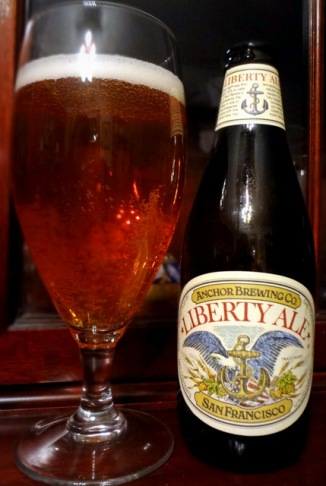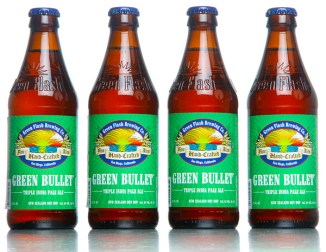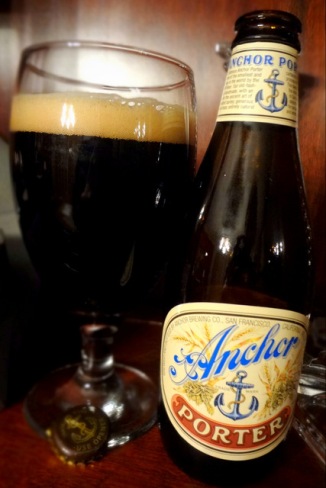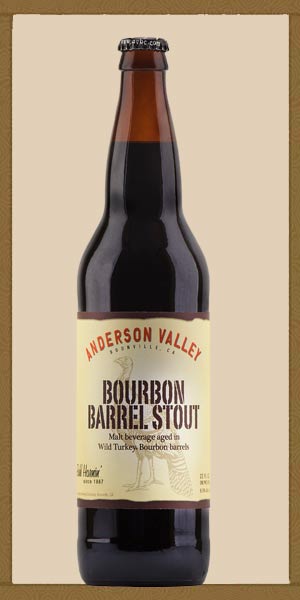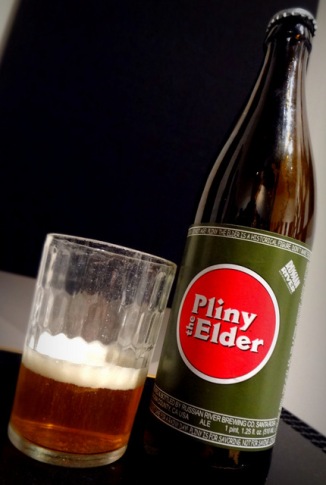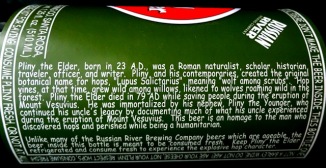 BY NOW MOST fans of Sucks probably know the story behind the name. They should, too, since it’s a good one—classically irreverent and whimsical as only Lagunitas can be. Since the beer’s apologetic launch in 2011 as a substitute for the seasonal Brown Shugga, Sucks has earned a legion of fans (many of them self-described addicts) and now ranks America’s most highly-regarded Double IPAs.
BY NOW MOST fans of Sucks probably know the story behind the name. They should, too, since it’s a good one—classically irreverent and whimsical as only Lagunitas can be. Since the beer’s apologetic launch in 2011 as a substitute for the seasonal Brown Shugga, Sucks has earned a legion of fans (many of them self-described addicts) and now ranks America’s most highly-regarded Double IPAs.
An improbable arc, perhaps, but one that makes sense in context. Lagunitas is quickly conquering the nation, led by a flagship I.P.A. that is becoming America’s next iconic craft beer (alongside the likes of Fat Tire, Pale Ale, 312, and Boston Lager). Flanking support from the likes of Hop Stoopid, Lucky 13, and Maximus satisfy more lupulin-tolerant palates no longer tweaked by the brand’s core offerings. Yet 100 IBU bombers are not quite apropos of everday consumption, so when Sucks arrived it was instantly embraced as an ideal compromise. With 60-70 IBUs, approximately 8% ABV, and a taste bud-bursting bushel of hops, Sucks has enough flavor to satisfy West Coast veterans while remaining approachable to those more accustomed to DayTime. Case closed?
Not quite. There’s a final piece to this puzzle—an underlying feature of the beer that might do more to explain its fans’ fierce cravings, rhapsodic praise, and recurring urge to bathe in the beer like the nectars of Eden. Sucks is sweet. Literally. Broadly a pale American ale with plenty of hops and alcoholic oomph, yes, but even more so a sweet easy-drinker that taps into our primordial mind and satiates its reservoir with sticky indulgence. This in itself is no great feat, of course: marketers have long known that consumers crave sugar, and sweet beers are brewed by the thousand every day. But in the wide world of ales there are, broadly speaking, two camps—malty (i.e. ‘sweet’) and hoppy (i.e. ‘bitter’)—and declared devotees of one camp rarely cross into the other. Sucks’ real magic, then, is having the looks, smell, and specs of a hoppy beer while delivering an amped-up dose of sweetness that delights fans of either persuasion.
 This grand theory may overstate Lagunitas’ ‘evil empire’ ambition, but the fundamentals of sweet seduction are sound. A related phenomenon is playing out in the red wine world where talking ‘dry’ but delivering ‘sweet’ has won fans in droves for such blends as Apothic Red. In fairness, it’s not that Sucks misrepresents itself as a hop-bomb. And it should in fact be celebrated for demonstrating that ‘hoppy’ doesn’t always mean ‘bitter’. So in that sense Sucks may well be a masterpiece. And yet….
This grand theory may overstate Lagunitas’ ‘evil empire’ ambition, but the fundamentals of sweet seduction are sound. A related phenomenon is playing out in the red wine world where talking ‘dry’ but delivering ‘sweet’ has won fans in droves for such blends as Apothic Red. In fairness, it’s not that Sucks misrepresents itself as a hop-bomb. And it should in fact be celebrated for demonstrating that ‘hoppy’ doesn’t always mean ‘bitter’. So in that sense Sucks may well be a masterpiece. And yet….
Sucks pours an inviting clear gold with a pure white head of soapy froth and mild persistent bubbles. Lacing is outstanding, and the thin residual foam layer can always be easily swirled back up into a solid finger’s width. Copious dry-hopping makes the aroma heavily resinous and ripe, invoking such hops as Galaxy, Simcoe, or maybe Mosaic. Speculative tasters often guess Citra but Lagunitas says them nay, and indeed there’s little mango to be found here. The focus is more on honey, nectar, tropical and less citric fruits; melon, papaya, and pear come to mind before grapefruit and lemon, for instance. A few floral notes work into the mix here and there, but overall the impression is virtually of a pale tropical punch.
This decadent overlay is easily borne by a body thickened by cereal grains, counting wheat, rye, and oats in addition to pale malt. Such a bevy of adjuncts, highly uncommon for a pale ale, accounts for the above-average head retention, weirdly high final gravity (1.025 or so), and generously medium body. Using less fermentable grains allows the beer to retain its bulk without resorting to specialty malts, smooths the mouthfeel substantially, and also helps keep the color bright (enabling its perception as a hoppy pale ale). Used in moderation, these grains also contribute fewer flavors to the mix than kilned malts, so for all its girth Sucks has only the lightest notes of toast and equally little caramel. Alcohol is very well hidden throughout and the medium-plus carbonation nestles in almost unnoticed. There’s a brief temptation to think of Sucks as mild for its lack of kick but its flavors are still quite big—just rounder and more seductive than bracing.
 Still, the beer is 60+ IBUs and a handful of leafy and piney bitterness eventually fights through the body and hop flavors, peaking just before the midpalate and returning in the aftertaste. Its lingering presence staves off a critical mass of sweetness while still using a much lighter touch than most Lagunitas beers. Swirling and warming will also draw out more traditional CTZ or Nugget characterstics (earthy, a little piney, and almost astringently herbal in great quantities) that are a welcome extra dimension. They don’t last for long, though, and soon enough Sucks rolls back to its old ways—sweet, succulently satisfying…and subversive, too.
Still, the beer is 60+ IBUs and a handful of leafy and piney bitterness eventually fights through the body and hop flavors, peaking just before the midpalate and returning in the aftertaste. Its lingering presence staves off a critical mass of sweetness while still using a much lighter touch than most Lagunitas beers. Swirling and warming will also draw out more traditional CTZ or Nugget characterstics (earthy, a little piney, and almost astringently herbal in great quantities) that are a welcome extra dimension. They don’t last for long, though, and soon enough Sucks rolls back to its old ways—sweet, succulently satisfying…and subversive, too.
It makes sense how some view this beer as a godsend for the ages and count the days until its release. Indeed, when in the right mood Sucks would surely be a list-topper. But it’s appropriate to remember that Sucks stepped in for a beer called Brown Shugga, during a season known for full-bodied and sweeter beers. So perhaps it’s best that Sucks remains a seasonal, since even in liquid form candy is still just a sometime food.
Served: On tap (Clementi’s, Arlington Heights)
Rating: 88

